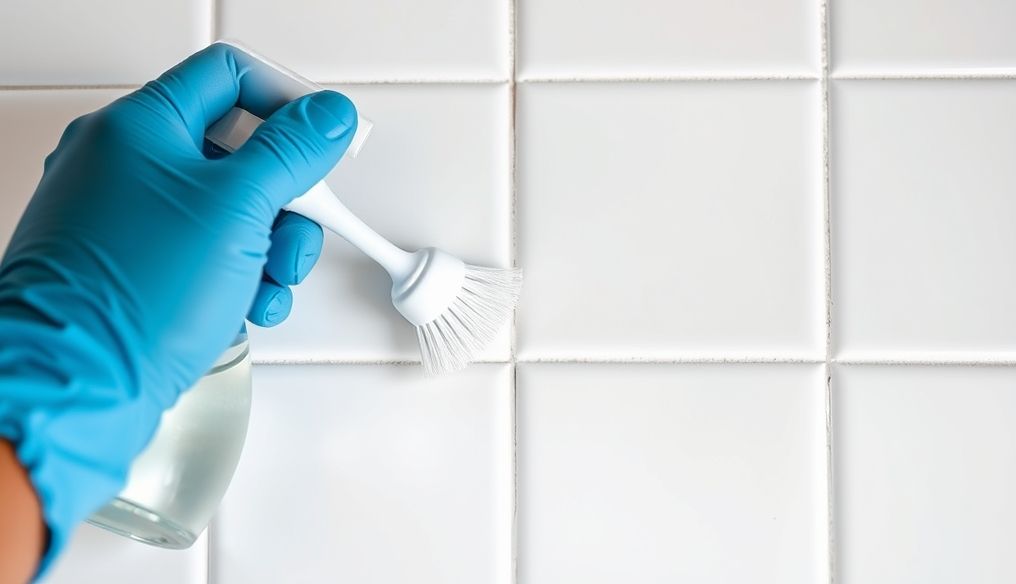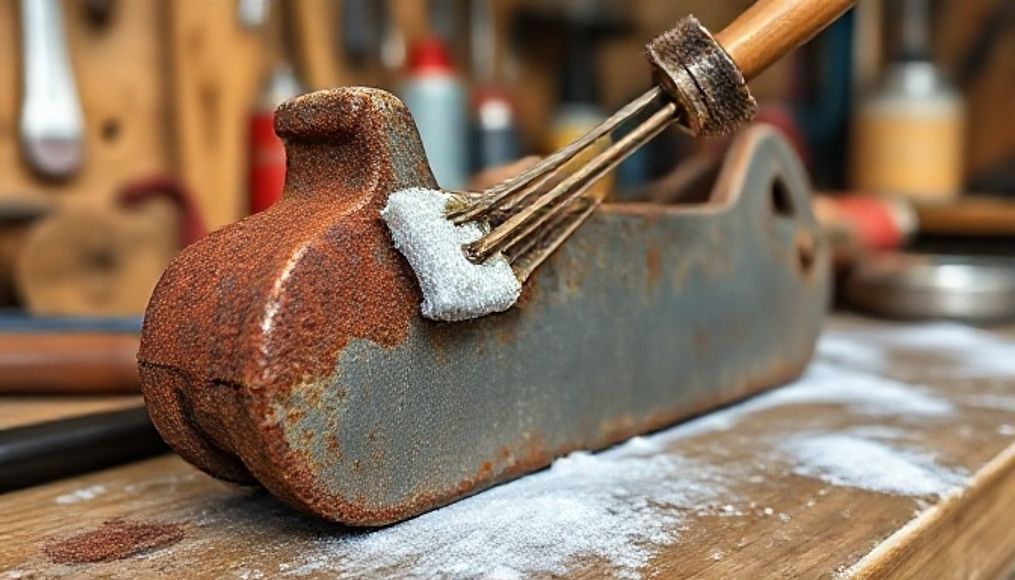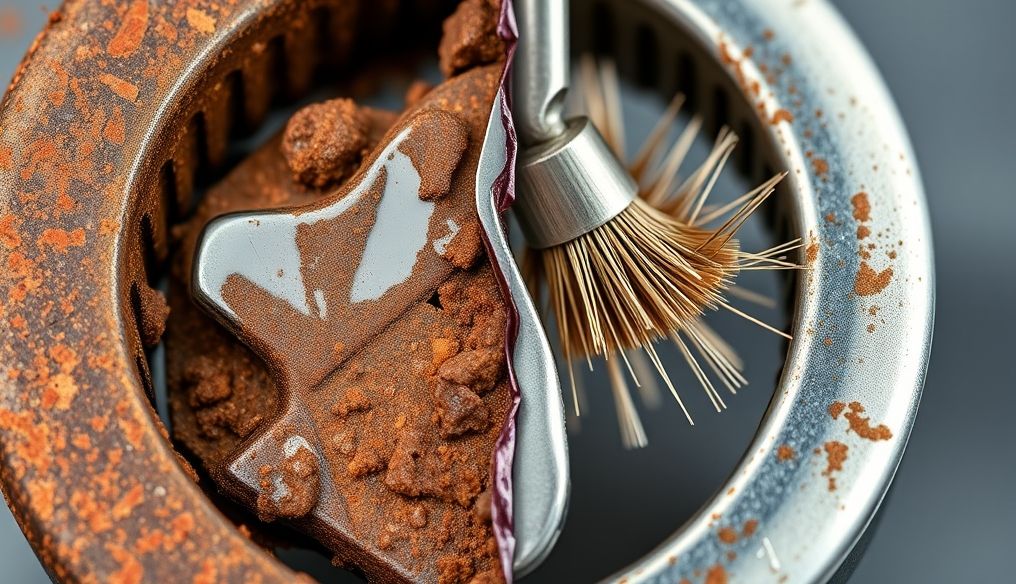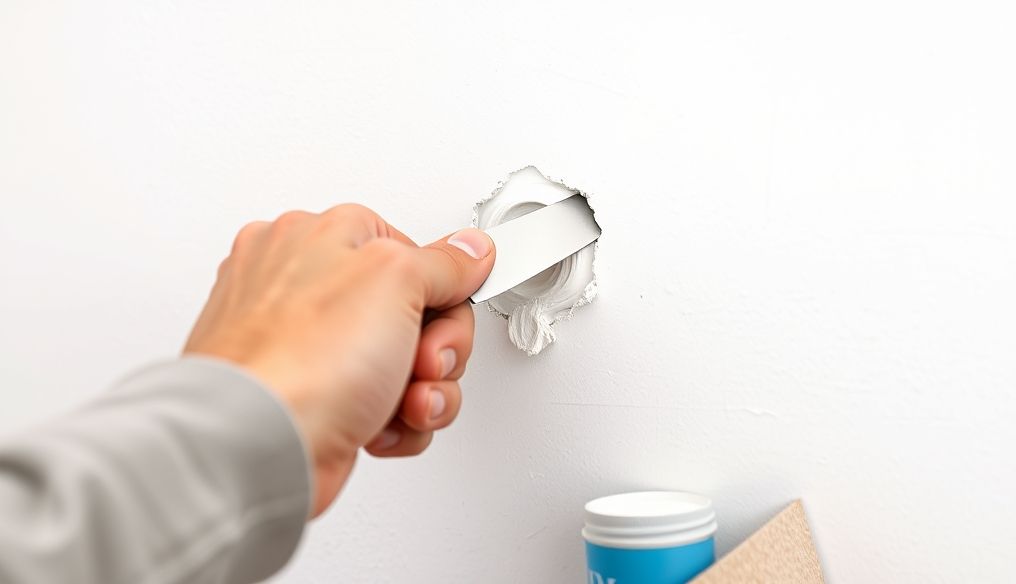Introduction: Why Does Tile Grout Get Dirty?
Tile grout, those thin lines between ceramic tiles, is constantly exposed to dirt. Dirt, soap residue, mold, and germs accumulate on it, making it look dirty and dull. In addition to the unattractive appearance, dirty grout can lead to health problems, especially if mold accumulates on it. Fortunately, there are many effective ways to clean tile grout and restore it to look brand new.
Chapter 1: Tools and Materials Needed to Clean Tile Grout
Before starting the cleaning process, make sure you have the following tools and materials:
- Cleaning brush: It is preferable to use a brush with stiff bristles, but not too rough so as not to scratch the tiles. An old toothbrush is an excellent option for small spaces.
- Cleaner: You can use simple household cleaners such as white vinegar, baking soda, and lemon juice. Or you can buy commercial cleaners specifically designed for cleaning tile grout.
- Spray bottle: For spraying the cleaner on the grout.
- Gloves: To protect your hands from chemicals.
- Safety glasses: To protect your eyes from cleaner spray.
- Warm water: To rinse the grout after cleaning.
- Clean cloth: To dry the grout.
- Mop: To clean the floor after finishing.
- Scraper (optional): To remove stubborn dirt.
Chapter 2: Cleaning with White Vinegar
White vinegar is an effective and inexpensive natural cleaner. It can be used to clean tile grout easily:
- Preparation: Fill a spray bottle with undiluted white vinegar.
- Spraying: Spray the vinegar on the tile grout and leave it for 10-15 minutes.
- Scrubbing: Use the cleaning brush to scrub the grout well.
- Rinsing: Rinse the grout with warm water.
- Drying: Dry the grout with a clean cloth.
Tip: If the dirt is stubborn, you can heat the vinegar slightly before using it.
Chapter 3: Cleaning with Baking Soda
Baking soda is a mild abrasive that helps remove dirt and stains:
- Preparation: Make a paste of baking soda and water.
- Application: Apply the paste to the tile grout.
- Scrubbing: Use the cleaning brush to scrub the grout well.
- Rinsing: Rinse the grout with warm water.
- Drying: Dry the grout with a clean cloth.
Tip: You can mix baking soda with white vinegar for a more effective cleaner. You will notice foaming when mixing, so be careful.
Chapter 4: Cleaning with Lemon Juice
Lemon juice is another natural cleaner that contains antibacterial and antifungal properties:
- Preparation: Put the lemon juice in a spray bottle.
- Spraying: Spray the lemon juice on the tile grout and leave it for 10-15 minutes.
- Scrubbing: Use the cleaning brush to scrub the grout well.
- Rinsing: Rinse the grout with warm water.
- Drying: Dry the grout with a clean cloth.
Tip: Lemon juice is especially effective in removing rust stains.
Chapter 5: Cleaning with Commercial Cleaners
Many commercial cleaners are available specifically for cleaning tile grout. Follow the instructions on the package carefully:
- Preparation: Wear gloves and safety glasses.
- Application: Spray the cleaner on the tile grout.
- Scrubbing: Use the cleaning brush to scrub the grout well.
- Rinsing: Rinse the grout with warm water.
- Drying: Dry the grout with a clean cloth.
Warning: Some commercial cleaners are strong and may cause skin and eye irritation. Make sure the place is well ventilated during use.
Chapter 6: Bleaching Tile Grout
If the tile grout is very dirty, you can use bleach to whiten it. However, it should be used with caution:
- Preparation: Wear gloves and safety glasses.
- Dilution: Mix one part bleach with 10 parts water.
- Application: Apply the solution to the tile grout and leave it for 5-10 minutes.
- Scrubbing: Use the cleaning brush to scrub the grout well.
- Rinsing: Rinse the grout well with warm water.
- Drying: Dry the grout with a clean cloth.
Warning: Bleach is a strong chemical and may cause skin and eye irritation. Make sure the place is well ventilated during use. Do not mix bleach with any other cleaners, especially ammonia, as it may produce toxic gases.
Chapter 7: Preventing Tile Grout from Getting Dirty in the Future
After cleaning the tile grout, you can take some steps to prevent it from getting dirty in the future:
- Regular cleaning: Clean the tile grout regularly using a mild cleaner.
- Removing excess water: After showering or cooking, dry excess water from floors and walls.
- Ventilating the place: Make sure bathrooms and kitchens are well ventilated to prevent mold growth.
- Using a sealant: Apply a layer of sealant to the tile grout to protect it from dirt and moisture.
Chapter 8: Additional Tips for Cleaning Tile Grout
- Use steam: A steam cleaner can be used to clean tile grout easily and effectively.
- Try toothpaste: Toothpaste is effective in removing light stains from tile grout.
- Use an electric cleaning brush: An electric cleaning brush provides extra cleaning power.
- Consult a specialist: If the tile grout is very dirty or damaged, you may need to consult a tile cleaning specialist.
By following these tips and steps, you can clean tile grout and restore it to look brand new, adding an aesthetic touch to your home and maintaining your health.




